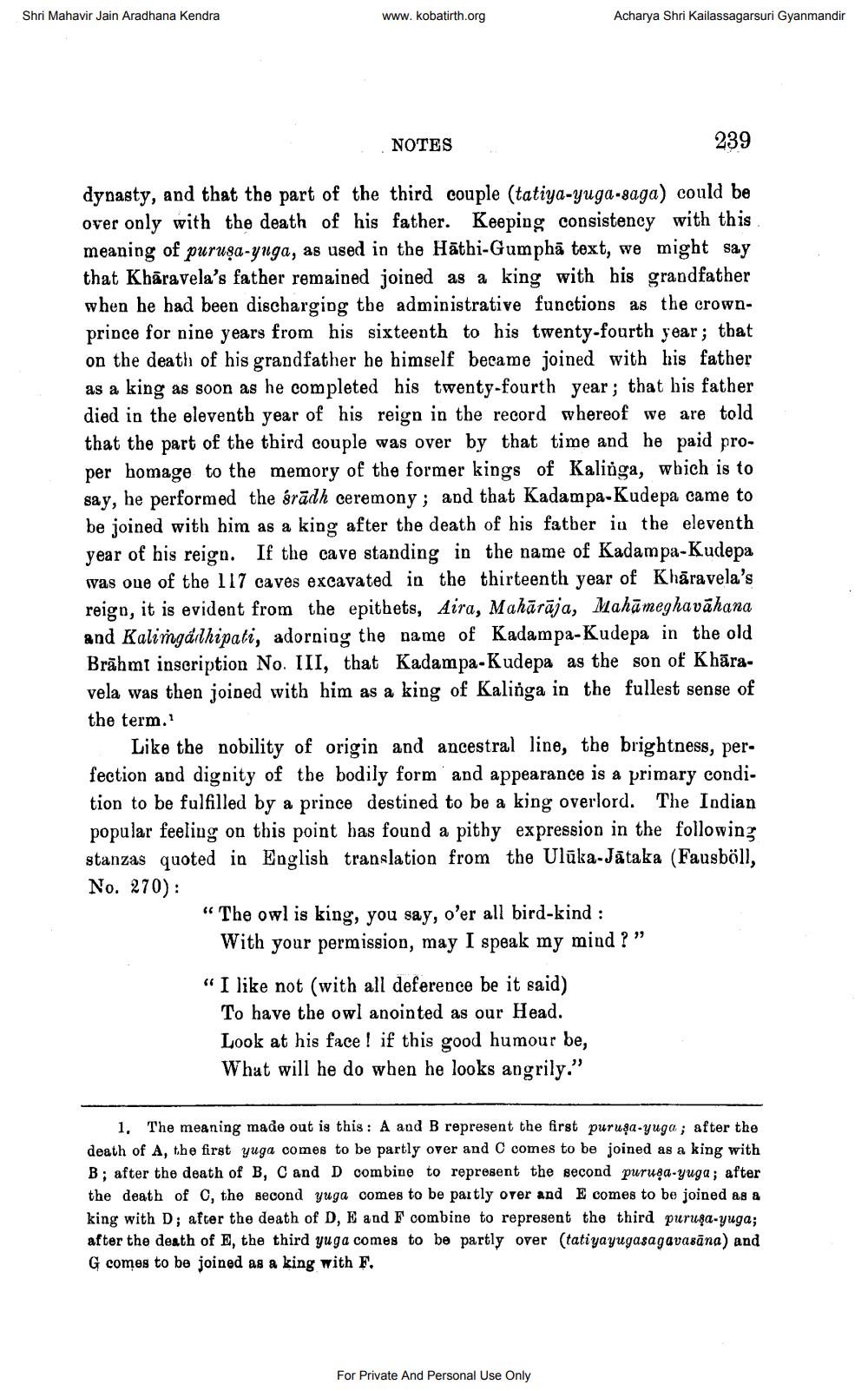________________
Shri Mahavir Jain Aradhana Kendra
www.kobatirth.org
Acharya Shri Kailassagarsuri Gyanmandir
NOTES
239
dynasty, and that the part of the third couple (tatiya-yuga-saga) could be over only with the death of his father. Keeping consistency with this meaning of puruşa-yuga, as used in the Hāthi-Gumphā text, we might say that Khāravela's father remained joined as a king with his grandfather when he had been discharging the administrative functions as the crownprince for nine years from his sixteenth to his twenty-fourth year; that on the death of his grandfather be himself became joined with his father as a king as soon as he completed his twenty-fourth year; that his father died in the eleventh year of his reign in the record whereof we are told that the part of the third couple was over by that time and he paid proper homage to the memory of the former kings of Kalinga, which is to say, he performed the srādh ceremony; and that Kadampa-Kudepa came to be joined with him as a king after the death of his fatber in the eleventh year of his reign. If the cave standing in the name of Kadampa-Kudepa was one of the 117 caves excavated in the thirteenth year of Khāravela's reign, it is evident from the epithets, Aira, Mahārāja, Mahāmeghavāhana and Kalimngáilhipati, adorning the name of Kadampa-Kudepa in the old Brāhmt inscription No. III, that Kadampa-Kudepa as the son of Khāravela was then joined with him as a king of Kalinga in the fullest sense of the term.
Like the nobility of origin and ancestral line, the brightness, perfection and dignity of the bodily form and appearance is a primary condition to be fulfilled by a prince destined to be a king overlord. The Indian popular feeling on this point bas found a pithy expression in the following stanzas quoted in English translation from the Ulūka-Jātaka (Fausböll, No. 270):
“The owl is king, you say, o'er all bird-kind :
With your permission, may I speak my mind ?” “I like not (with all deference be it said)
To have the owl anointed as our Head. Look at his face! if this good humour be, What will he do when he looks angrily."
1. The meaning made out is this: A and B represent the first puruşa-yuga; after the death of A, the first yuga comes to be partly over and C comes to be joined as a king with B; after the death of B, C and D combine to represent the second purusa-yuga; after the death of C, the second yuga comes to be partly over and E comes to be joined as a king with D; after the death of D, E and F combine to represent the third puruşa-yuga; after the death of E, the third yuga comes to be partly over (tatiyayugasagavasāna) and G comes to be joined as a king with F.
For Private And Personal Use Only




